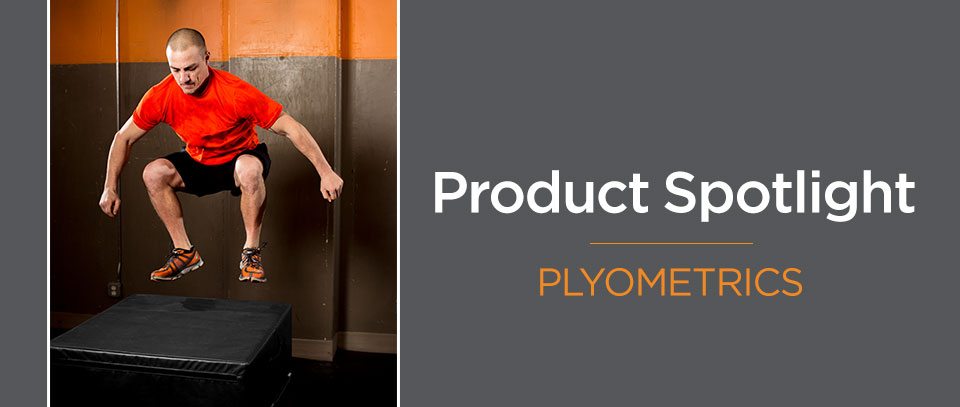Plyometric training techniques have been used in athletic training programs for many years, but lately this training style seems to be working its way into the mainstream of the fitness industry. Trainers and group fitness instructors tend to be dropping a few more “B” words lately like burpees and box jumps. And it’s not just the plyo exercises that are gaining attention; more equipment is being designed and updated to facilitate this type of training from athletic training facilities to health clubs. But what exactly is plyometric training and why should we do it?
What is it?
Plyometrics (aka “plyo training”, “jump training”, or “reactive training”) is a training technique that utilizes explosive movements such as bounding, hopping, and jumping. Training in this way will not only develop muscular power but improve the ability to accelerate and decelerate the body when changing directions. This can lead to better reaction time and overall function and safety while in motion.
Plyo exercises have three distinct phases:
- Eccentric or loading phase
- Amortization or stabilization phase
- Concentric or unloading phase
If someone asked you to jump, you would probably bend your knees, lower your hips, and extend your arms backwards at the shoulder before leaving the ground. This is considered the loading phase of a jump. The reason we seem to do that automatically is because muscular tissue has elastic properties similar to a rubber band. If you were going to shoot a rubber band across the room, you would stretch it back first, right? That is why in order to perform an effective jump it is best to squat down and load the muscles in your legs before leaving the ground.
Next, there is a very brief moment of stabilization before take-off as the body prepares to shift the potential energy loaded in the legs to the kinetic energy of motion. The shorter amount of time spent in the stabilization phase the more powerful the result.
Lastly, in a plyometric movement, the concentric or unloading phase happens rapidly and involves leaving the ground. An important part of effective plyometric training is rapid acceleration followed by deceleration. In other words, try to eliminate the loud and abrupt landing than can happen when jumping onto a step or a box.
If you aren’t an athlete, why should you do it?
Simply stated, plyometrics is an outside the box (or perhaps on top of the box) form of exercise that burns calories. It is a great way to change things up from a traditional cardio or strength training routine.
A more technical reason is that our brain will only recruit muscles at the speed it has been trained to do so. If the nervous system and the muscular system aren’t trained to recruit muscles rapidly, when met with a demand for quick reaction, neither will respond appropriately and injury can occur.
Can anyone do plyometrics?
Yes, like many traditional exercises, plyometric exercises can be progressed and regressed to meet the physical capabilities of an individual. Nevertheless, there is a bit of a pre-requisite. Jumping, bounding, and hopping executed on one or two legs each require a base level of balance, stabilization, coordination, and core strength. Athletic and personal trainers can assess an individual in these areas, however if you are working out on your own it is best to have a trainer supervise your first few attempts as a precaution.
What type of equipment can be used with plyometric training?
Most of these exercises can be executed inside or outside with body weight only such as squat jumps, single leg hops, long jumps, etc. However, there are a few items that you might see in a gym or training room that can be used to assist reactive training.
References: Clark, Michael A. et al. NASM Essentials of Personal Fitness Training, Fourth Edition. Jones & Bartlett; Burlington, 2014.




